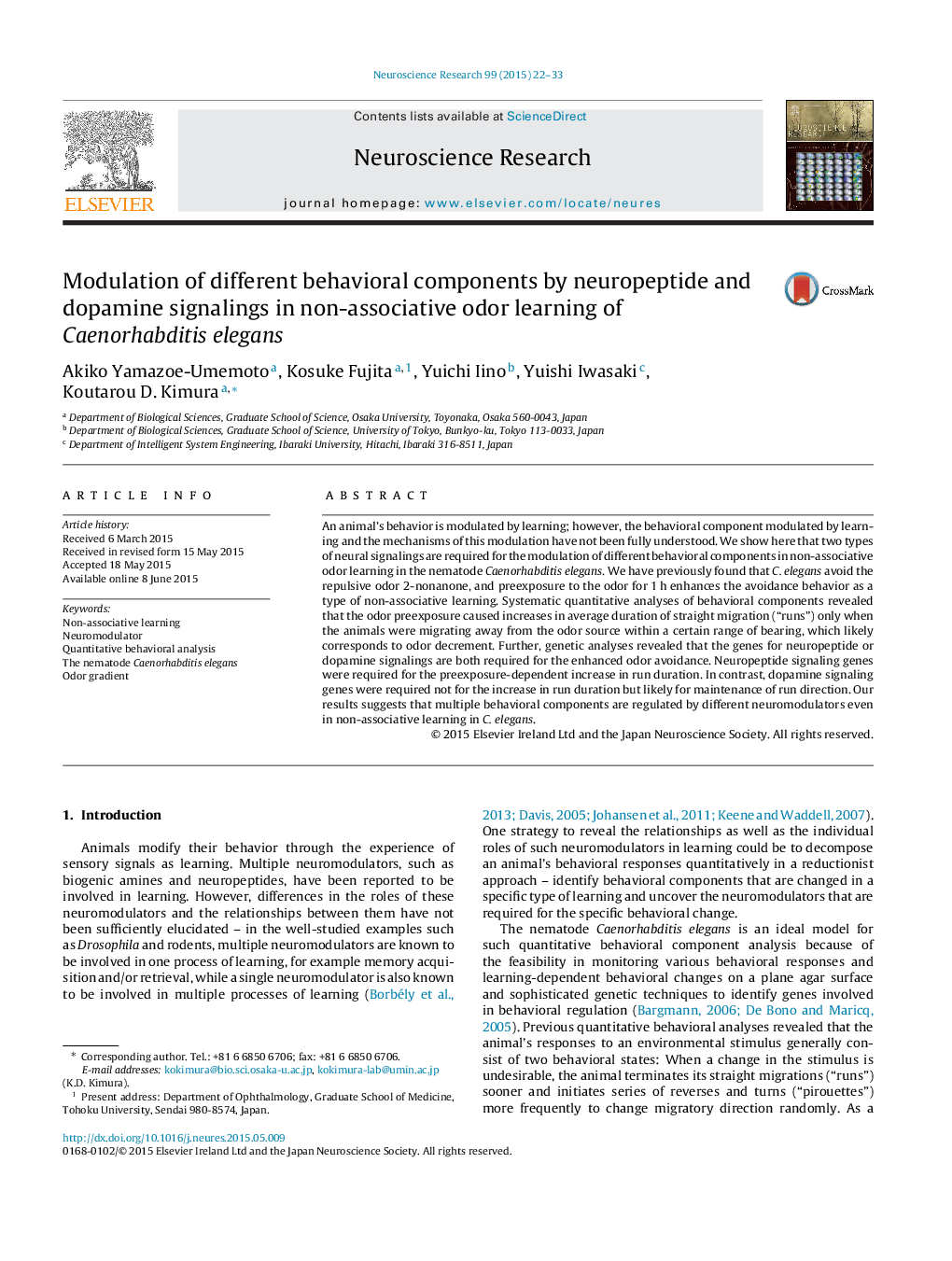| Article ID | Journal | Published Year | Pages | File Type |
|---|---|---|---|---|
| 4351325 | Neuroscience Research | 2015 | 12 Pages |
•Avoidance behavior to an odor 2-nonanone in C. elegans is enhanced as learning.•We analyzed the enhanced odor avoidance behavior mathematically and genetically.•The animals prolonged straight migration via neuropeptide signaling by learning.•Dopamine signaling was required to maintain migratory direction after learning.•These neuromodulators regulated different behavioral components for learning.
An animal's behavior is modulated by learning; however, the behavioral component modulated by learning and the mechanisms of this modulation have not been fully understood. We show here that two types of neural signalings are required for the modulation of different behavioral components in non-associative odor learning in the nematode Caenorhabditis elegans. We have previously found that C. elegans avoid the repulsive odor 2-nonanone, and preexposure to the odor for 1 h enhances the avoidance behavior as a type of non-associative learning. Systematic quantitative analyses of behavioral components revealed that the odor preexposure caused increases in average duration of straight migration (“runs”) only when the animals were migrating away from the odor source within a certain range of bearing, which likely corresponds to odor decrement. Further, genetic analyses revealed that the genes for neuropeptide or dopamine signalings are both required for the enhanced odor avoidance. Neuropeptide signaling genes were required for the preexposure-dependent increase in run duration. In contrast, dopamine signaling genes were required not for the increase in run duration but likely for maintenance of run direction. Our results suggests that multiple behavioral components are regulated by different neuromodulators even in non-associative learning in C. elegans.
